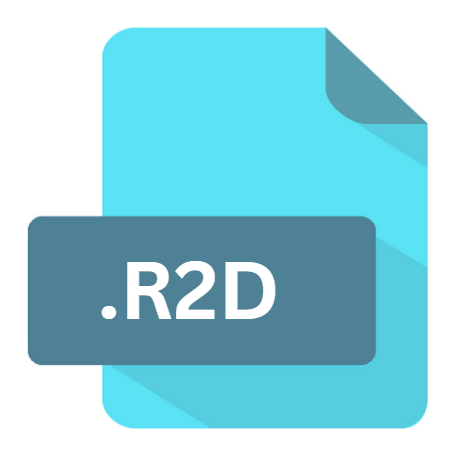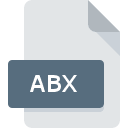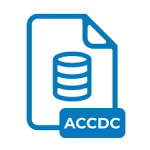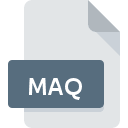.R2D File Extension

Borland Reflex Database
| Developer | Borland |
| Popularity | |
| Category | Database Files |
| Format | .R2D |
| Cross Platform | Update Soon |
What is an R2D file?
.R2D files are data files created by Borland Reflex, a relational database management system (RDBMS) developed by Borland International in the late 1980s and early 1990s.
These files serve as containers for structured data, organized in tables, forms, and reports, facilitating efficient storage and retrieval of information for various applications.
More Information.
In the landscape dominated by cumbersome database systems, Borland Reflex stood out for its simplicity and versatility.
Launched in 1985, Reflex gained popularity for its intuitive interface and robust features, catering to the needs of professionals and enthusiasts alike.
The .R2D file extension served as the backbone of Reflex databases, encapsulating the structured data and enabling seamless interaction with the system.
Origin Of This File.
Borland Reflex emerged during the era when personal computing was gaining traction, offering users a user-friendly database management solution for small businesses and individual users.
The .R2D file extension became synonymous with Reflex databases, embodying the essence of data organization and accessibility.
File Structure Technical Specification.
.R2D files adhere to a structured format, designed to store relational data in a compact and efficient manner. At its core, a Reflex database comprises tables, each containing rows and columns representing entities and attributes, respectively.
Additionally, the file may include forms for data entry and manipulation, as well as reports for presenting information in a readable format.
Technically, .R2D files employ a proprietary format optimized for performance and compatibility with Borland Reflex software.
While specific details of the file structure are proprietary, the underlying principles of relational databases guide the organization and management of data within .R2D files.
How to Convert the File?
In scenarios where migration or interoperability is required, converting .R2D files to more widely supported formats becomes necessary. Several methods and tools facilitate this process, allowing users to preserve data integrity while transitioning to modern systems.
- Third-Party Conversion Software: Specialized tools designed for converting Borland Reflex databases to standard formats offer a straightforward solution. These applications typically support batch conversion of .R2D files to formats like CSV (Comma-Separated Values) or SQL (Structured Query Language), ensuring compatibility with contemporary database systems.
- Manual Export: Borland Reflex software may provide built-in functionality for exporting data to common formats. Users can leverage this feature to export .R2D files to CSV, Excel, or other formats supported by modern database management systems.
- Database Migration Services: Professional services specializing in database migration offer expertise and tools to streamline the conversion process. By analyzing the structure and contents of .R2D files, these services facilitate seamless migration to target platforms, minimizing downtime and data loss.
Advantages And Disadvantages.
Advantages:
- User-Friendly Interface: Borland Reflex offers an intuitive environment for database management, catering to users with varying levels of technical expertise.
- Compact Storage: .R2D files utilize efficient compression techniques to minimize storage requirements, making them ideal for resource-constrained environments.
- Reliability: With proper maintenance, Reflex databases exhibit robust performance and data integrity, ensuring the longevity of stored information.
Disadvantages:
- Limited Scalability: While suitable for small to medium-sized datasets, Reflex databases may encounter performance bottlenecks when handling large volumes of data.
- Platform Dependency: Borland Reflex software primarily targeted DOS and early Windows operating systems, limiting cross-platform compatibility.
- Obsolescence: As technology advances, legacy file formats like .R2D face the risk of obsolescence, necessitating migration to modern alternatives to ensure data accessibility.
How to Open R2D?
Open In Windows
- Borland Reflex: Users can install Borland Reflex software on Windows machines to open and interact with .R2D files natively.
- Third-Party Software: Alternatively, third-party database management tools compatible with Windows may support opening and editing .R2D files, offering enhanced functionality and integration with modern workflows.
Open In Linux
- Virtualization: Similar to Linux, macOS users can employ virtualization software to run Windows and access .R2D files using Borland Reflex or compatible third-party applications.
- Emulation: Emulation software may offer limited support for running Borland Reflex on macOS, providing a workaround for accessing .R2D files without a native Windows environment.
Open In MAC
- Compatibility Layer: Utilizing compatibility layers like Wine, users can run Borland Reflex software on Linux distributions, enabling access to .R2D files without requiring a Windows environment.
- Virtualization: Running a virtual machine with Windows installed allows Linux users to utilize Borland Reflex software seamlessly, providing access to .R2D files within the virtualized environment.













